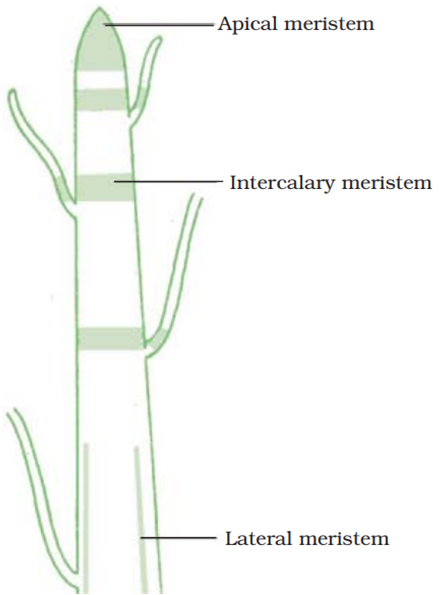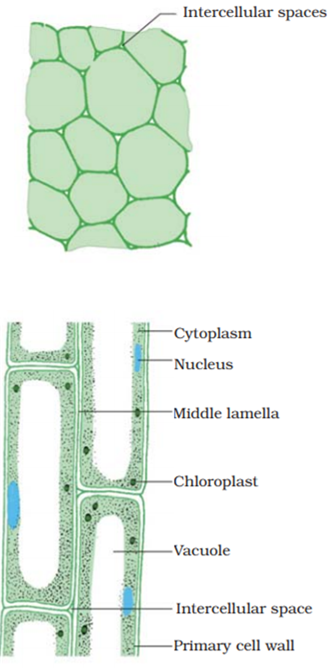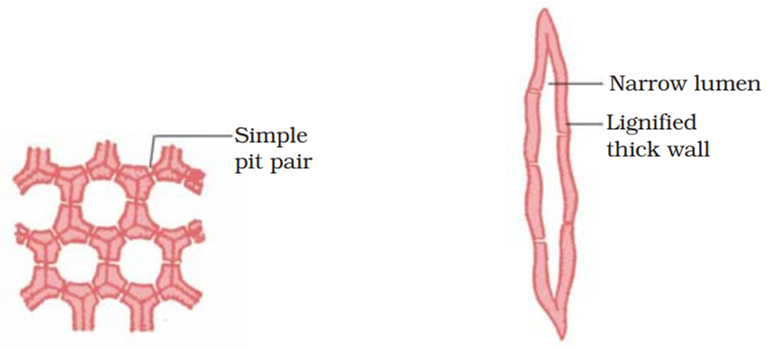CBSE
Class 10 Class 12
Plant tissues are of two main types, viz. meristematic tissue and permanent tissue.
The growth of plants occurs only in certain specific regions. This is because the dividing tissue also known as meristematic tissue (Meristos – divisible) is located only at these points. The meristematic tissues are made up of a group of similar and immature cells, which can divide and form new cells. Meristematic cells divide continuously and thus help in increasing the length and thickness of the plant. Depending upon the position, meristematic tissues are of three types. They are as follows:

Characteristic features of Meristematic tissues
The permanent tissues are classified as
A tissue with the cells of similar structure (one type of cells) and function is called simple tissue. It is of three types.
Parenchyma:

Collenchyma:

Sclerenchyma:

Complex tissues are made of more than one type of cells. All these cells coordinate to perform a common function. Xylem and phloem are examples of such complex tissues.
Xylem: Xylem is mainly concerned with the transport of nutrients, water and minerals upwards in the plant body. It forms a continuous tube through the roots, stems, leaves, flowers and fruits by the fusion of elongated cells.
It is composed of different kinds of cells namely,
Phloem: Phloem conducts food materials from leaves to the other parts of the plant. It is made up of four types of cells.
